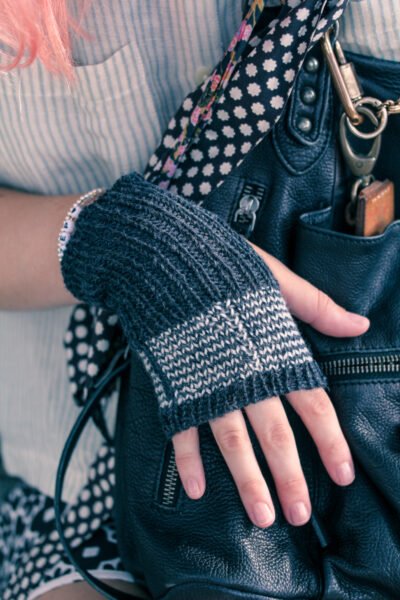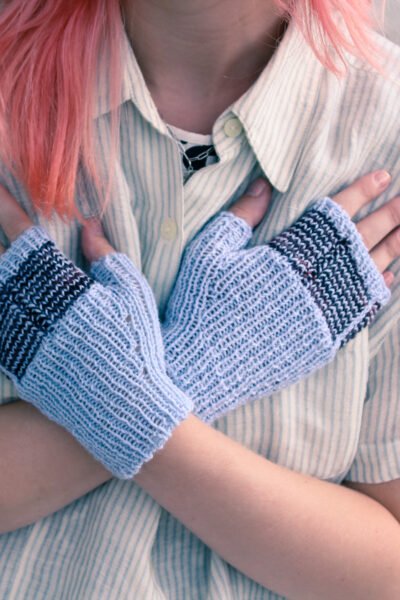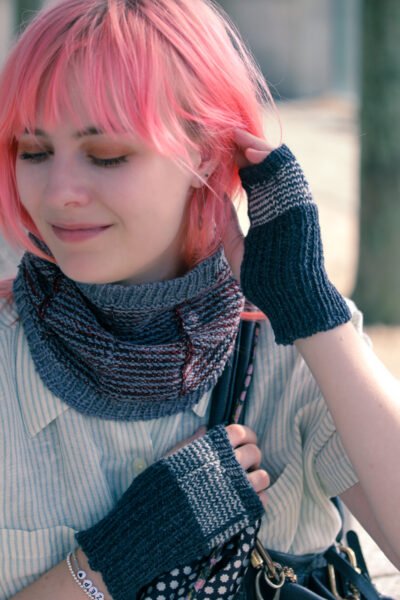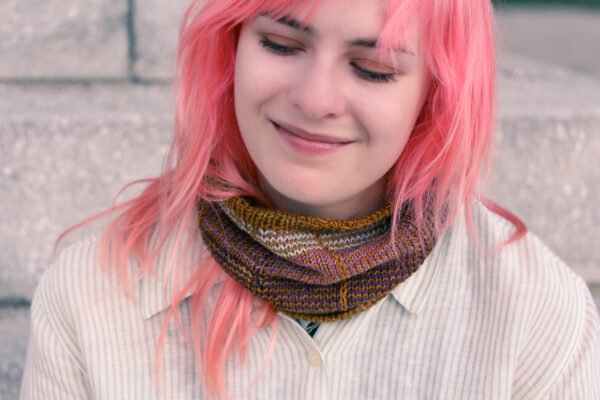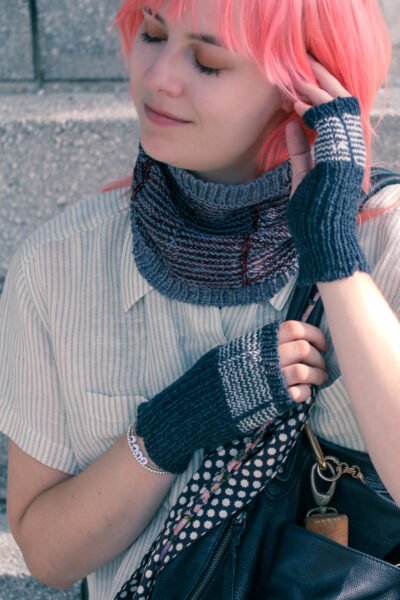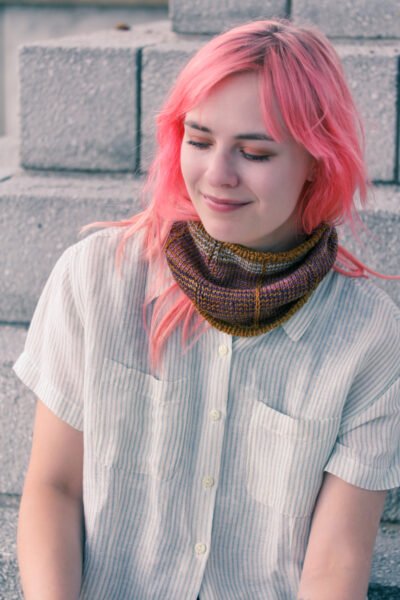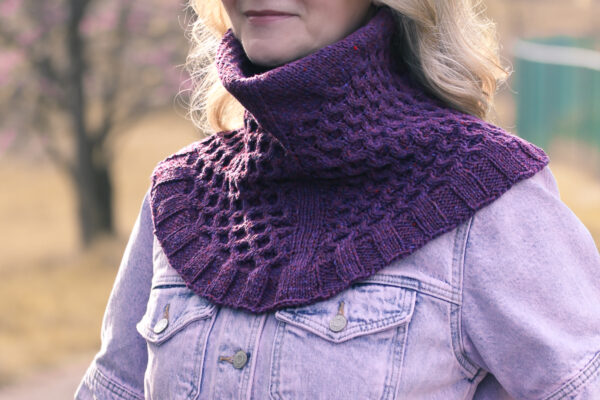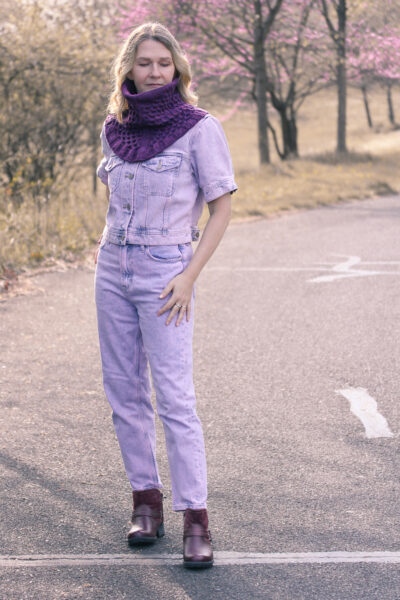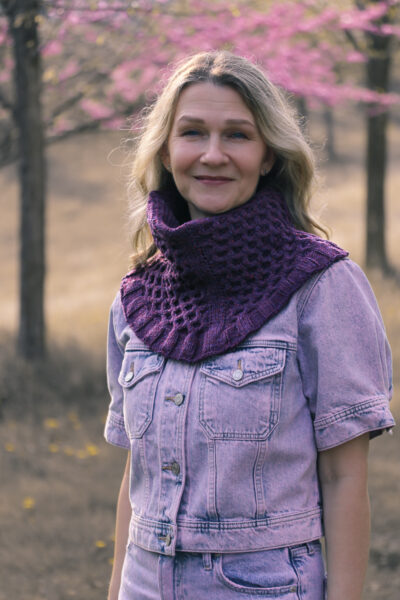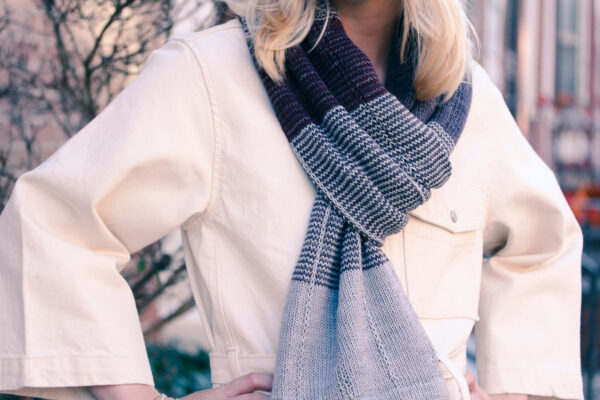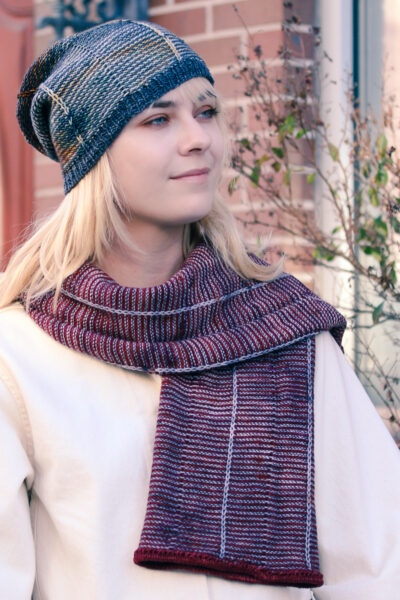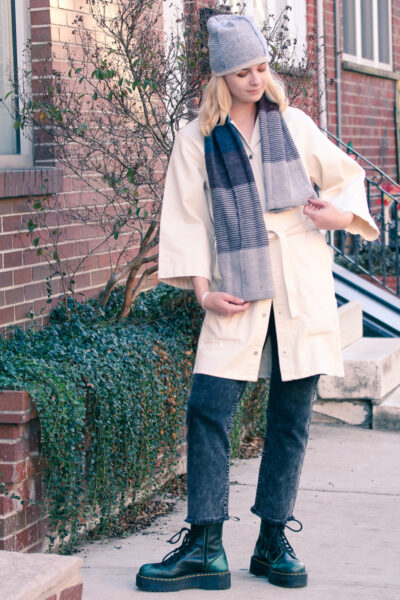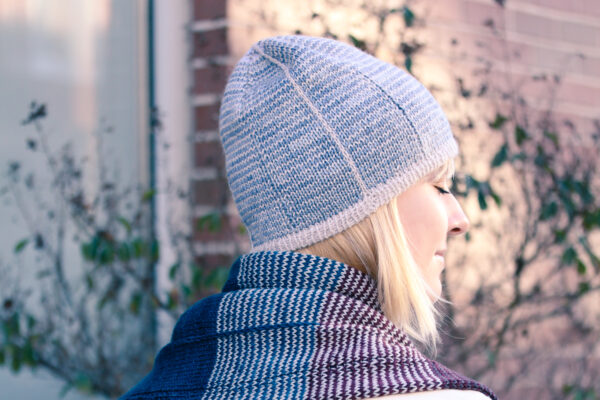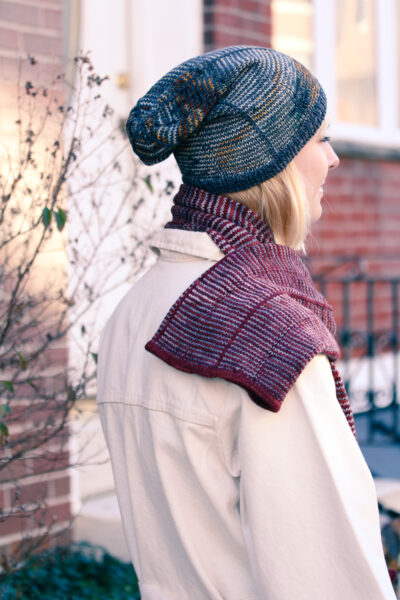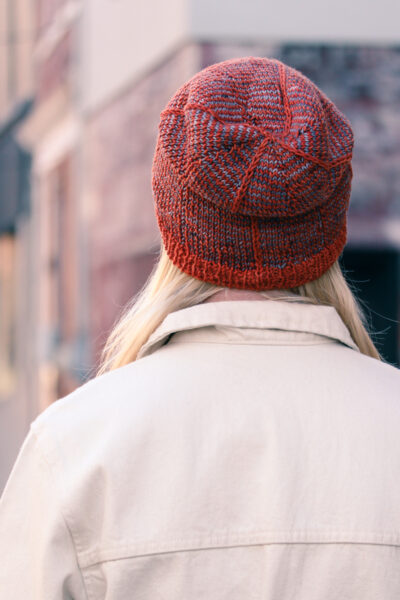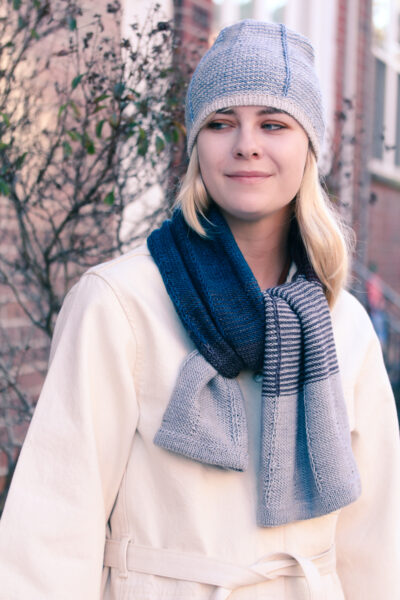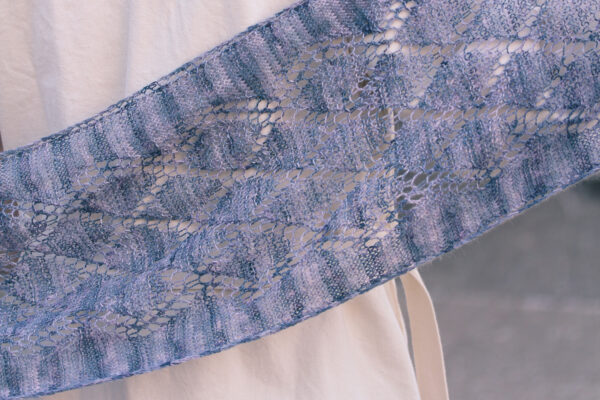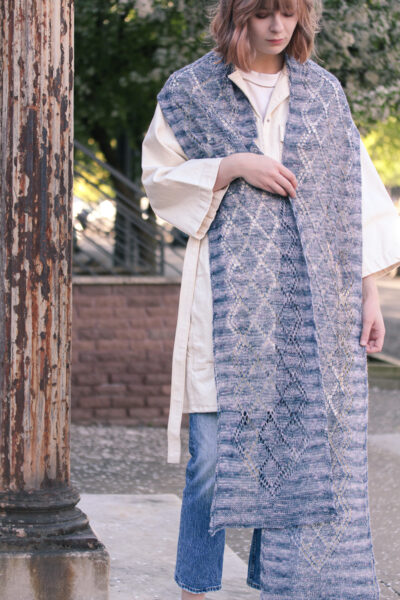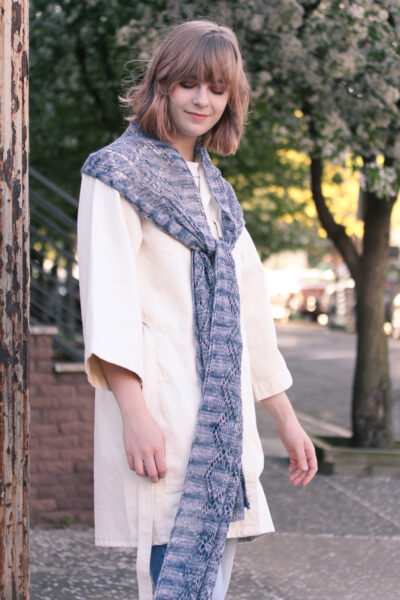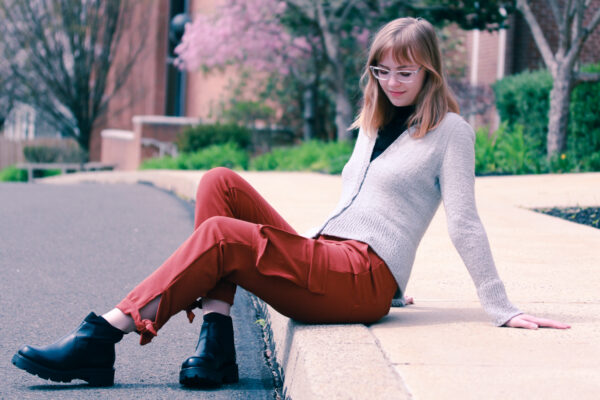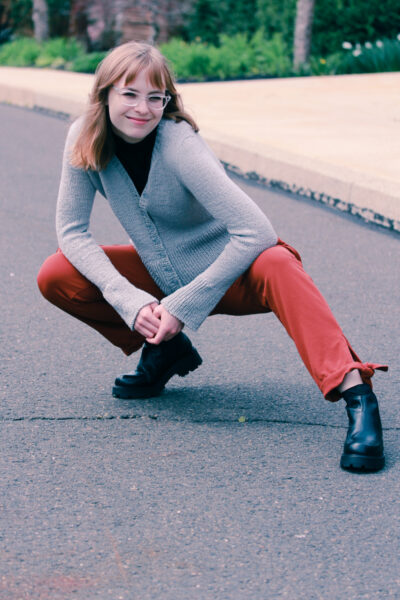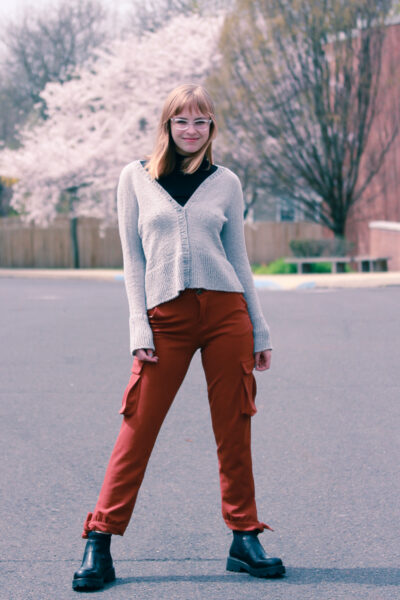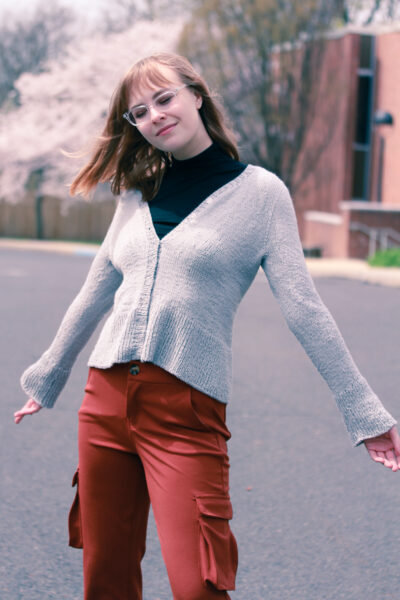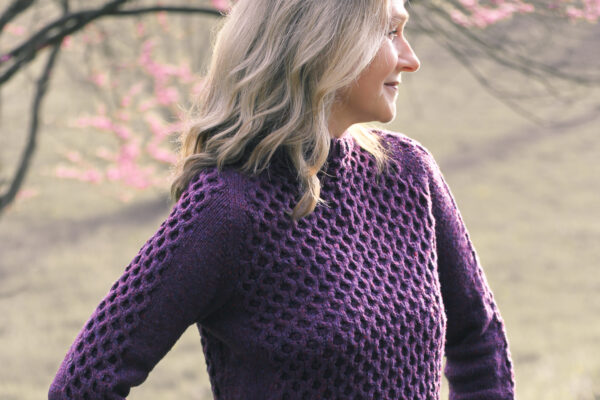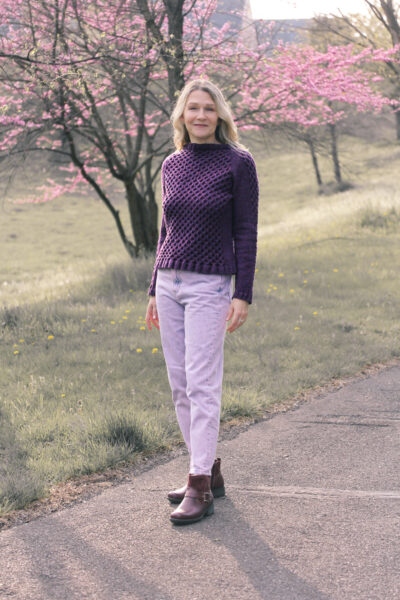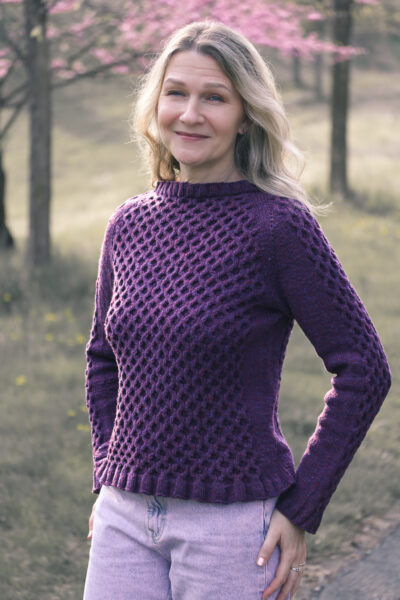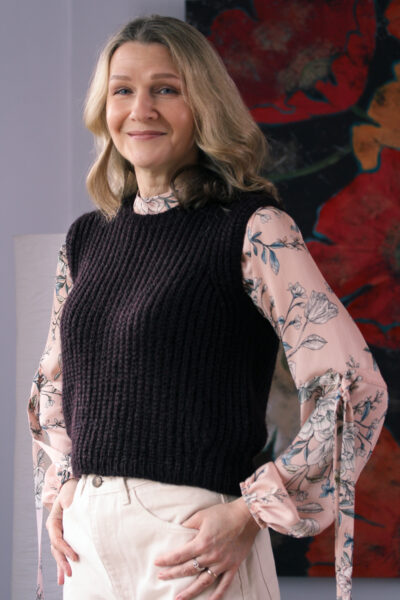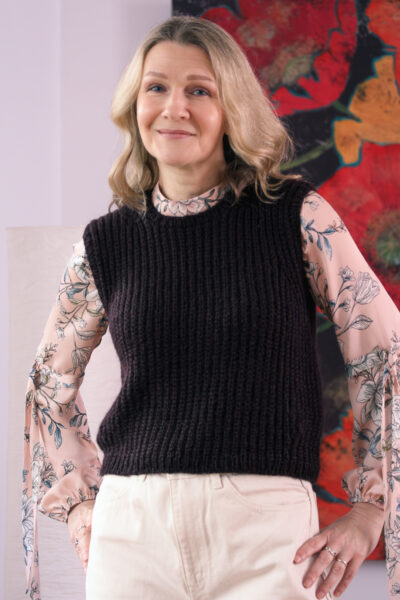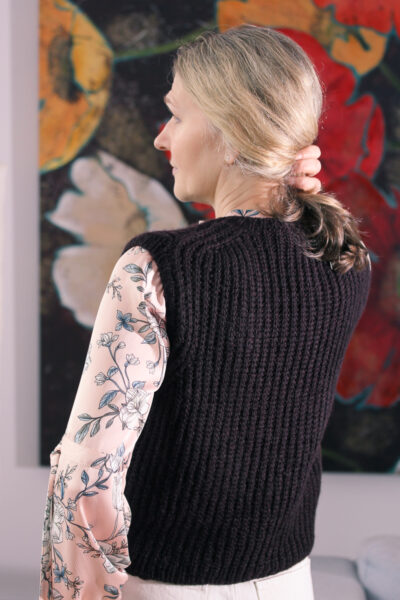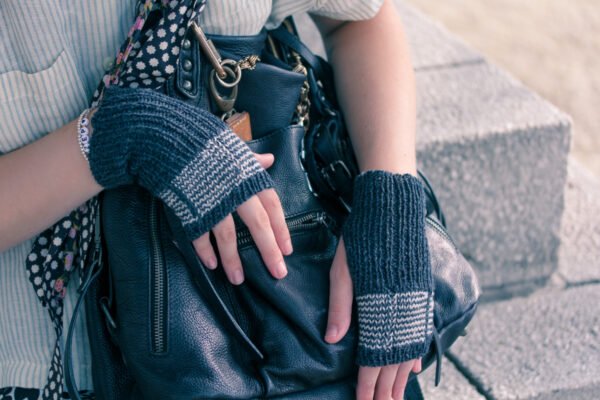
Worked in the round from cuff to fingertips, Ink Mitts use the helix knitting technique to create easy jogless one-row stripes on fingerless mitts offered in two versions – thumbless or with an ergonomic gusseted thumb. Completely reversible thanks to invisible color changes, one side displays stockinette and the other reverse stockinette, each with a slipped stitch decorative linear detail. Pair two contrasting colors, and revel in using up leftovers for the stripes; your versatile fingering weight yarn makes chic lightweight mitts.
Construction: The helix knitting technique avoids the jog in color between stripe rounds, as well as removes the ridge where yarns are carried on the reverse of the work, making the mitts delightfully reversible. Helix knitting is used on the striped hand section of the Ink Mitts, with 4 stationary markers to indicate the position of the slipped stitch columns; check both sides of the work frequently, to be sure these columns are maintained. No EOR marker is needed, as the “round” is constantly spiraling around the work. The Ink Mitts are cast on using the longtail tubular method with color A for a smooth, infinity edge. Comfortable ribbing creates a fitted cuff and lower hand, with options for a thumbless or an ergonomic gusseted thumb version. The hand continues with the addition of color B for the helix stripes section, worked with just one color every round. The mitts are finished with an elegant tubular bind off. Both versions are left-right agnostic; make two mitts identically for the pair. When changing yarns, do not cross or twist the yarns; drop the old color to the right, and pick up the new color from underneath it on the left. The EOR marker serves as a mA during the striping; simply treat it as a mA and slip it purlwise every time you meet it.
Techniques & Skills Used: tubular CO and BO, knit/purl, slipped stitches, increasing, working in the round.
Size: S (M, L); about 3 (3.25, 3.75)” across back of hand at knuckle, and 7.5” length, measured flat and unstretched; samples shown in size S.
Yarn: use fingering weight yarn in two colors from any combination of full skeins, mini skeins, or leftovers, about 70-100 (A) and 10-15 (B) yards total; see pattern p. 2 for information regarding yarns used in the samples.
Yarn (grey Ink sample): Miss Babs Yummy 2-Ply (100% superwash merino wool; 400 yards/365m/110g), 1 skein Pewter (A), and Woolfolk Sno 01+02 (100% merino wool; 223 yards/204m/50g), 1 skein (B). Use fingering weight yarn in two colors from any combination of full skeins, mini skeins, or leftovers. The grey sample used 68 (A) and 7 (B) yards.
Yarn (blue Ink sample): KnitPicks Palette (100% wool; 231 yards/211m/50g), 1 skein Bluebell (A), and Miss Babs Yummy 2-Ply Toes (100% superwash merino wool, 133 yards/122m/37g), 1 skein (B). Use fingering weight yarn in two colors from any combination of full skeins, mini skeins, or leftovers. The blue sample used 70 (A) and 7 (B) yards.
Other Materials: US 4 (3.5mm) 32” circular needle for Magic Loop, or dpns, or size to match gauge; (2) US 3 (3.25mm) 32” circular needles and scrap yarn for tubular CO and BO; Stitch markers (2 color A and 2 color B); Stitch holder; Yarn needle.
Gauge: 26 st and 36 rounds/4” in stockinette stitch after blocking.
See it on Ravelry or on Payhip, to read more or purchase the pattern.

